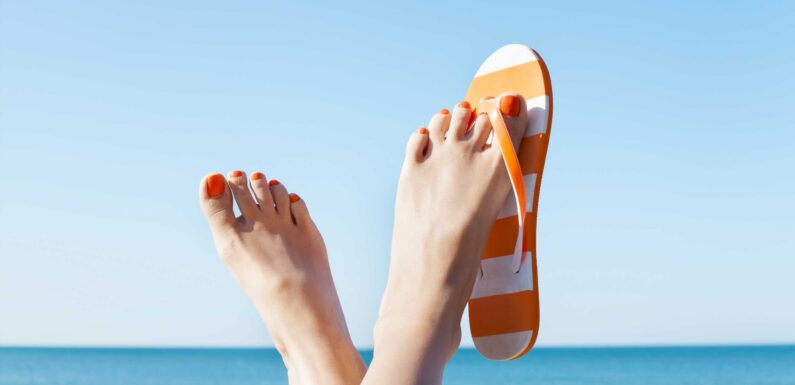
YOU probably don't think of you feet often – unless someone stomps on them.
But your tootsies can reveal a lot about the state of your health.
From what an unusually large big toe means for your joints, to ulcers that may indicate there is something wrong with your pancreas, they are able to tell you quite a bit.
Here, we look at the signs and symptoms of six different conditions that can affect your feet, but reveal much more…
1. Heart disease
You might think hairy feet are more likely to affect men, but women have fine hair on their toes too.
If you notice the hair on your feet has disappeared, this could be a sign of peripheral arterial disease (PAD), according to the American College of Foot and Ankle Surgeons.
Read more on foot health
From calluses to cracked heels, what your feet reveal about your health
I’m a podiatrist and this is what you need to eat for summer-ready feet
PAD is the restriction of blood in the arteries of the leg and may signal more widespread arterial disease, which can cause heart disease.
Other symptoms of the condition include a cold feeling in the lower legs or feet, leg numbness, painful cramping in the hips or legs and shiny skin on the legs.
2. Diabetes
If you notice a wound on the soul of your foot which will not heal, this could signal diabetes.
Diabetes is a condition that causes a person's blood sugar level to become too high.
Most read in Health
I'm a nutritionist – these are the 'healthy' foods that could be harming you
I was paralysed from waist down but now I've had a miracle baby with my 'nurse'
Fury over woke NHS poster that says asking someone's name is transphobic
We’ve battled prostate cancer like Eastenders’ Alfie, here’s what men must know
One complication is neuropathy, which is where the nerves become damaged and a patient starts to lose feeling – typically in the feet.
One US study suggests up to five per cent of people with the condition will get foot ulcers.
And because they can easily get infected, one per cent of people with these wounds end up having to get some sort or amputation.
Other symptoms of diabetes include peeing more than usual, feeling thirsty all the time, tiredness, blurred vision and losing weight without trying to.
3. Hypothyroidism
Suffering from cold feet could be a sign of a thyroid condition called hypothyroidism.
This happens when the thyroid doesn't produce enough hormones, the NHS says.
It can cause many of the body's functions to slow down, and change the way it processes fat.
Because of these changes, thyroid problems can lead to high cholesterol and artery clogging.
This could potentially result in serious heart-related issues, such as angina or a heart attack.
Common symptoms of hypothyroidism include tiredness, weight gain, constipation, depression and muscle cramps.
4. Fungal infection
If your toenails begin to look a bit yellow and thick you could have something called athlete’s foot.
It's a common infection of the skin of the feet, especially between the toes.
Wearing tight footwear which doesn't allow your feet to breathe, such as work boots, can cause the feet to sweat excessively which increases the risk of fungal infections.
5. Gout
Big toes are, by definition big.
But if your big toe is looking especially large – and has been for a long time – you could have a type of arthritis called gout.
It can lead to sudden attacks of severe pain and swelling.
If left untreated, gout can lead to kidney stones and permanent joint damage.
6. Anaemia
Toenails that look a bit sunken or spoon-like (the ends will be flicking upwards) you suggest anaemia, according to a report in The Permanente Journal.
Iron deficiency anaemia is triggered by lack of iron, often because of blood loss or pregnancy.
Iron is used by the body to produce red blood cells, which help store and carry oxygen in the blood.
Other possible symptoms of anaemia include tiredness, weakness, shortness of breath and pale or yellowish skin, which might appear more obvious on white skin than on Black or brown skin.
Read More on The Sun
I’m a mum & my hack turns a kid’s plane seat into a comfy bed
Future of Pizza Hut hangs in the balance as chain battles huge debt pile
When to worry
If you think you could have athlete's foot, a pharmacist can give you some treatments to clear the infection up.
But if you believe you could have any of the other conditions mentioned, it's important you see your GP.
Source: Read Full Article








